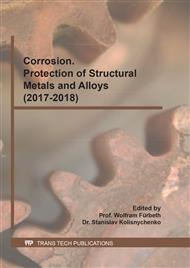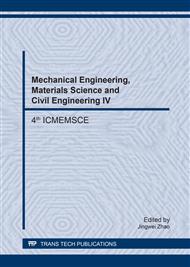p.330
p.335
p.340
p.345
p.350
p.354
p.363
p.369
p.375
Investigation in the Influence of Surface Treatment on Mechanical and Electrochemical Corrosion Properties of Ti-6Al-4V Alloy
Abstract:
Potential difference between two phases in the Ti-6Al-4V alloy results in the galvanic cell reaction and corrosion. In order to improve the properties of Ti-6Al-4V, it was treated under different temperature with the atmosphere of 5vol. % oxygen and 95 vol. % nitrogen. The results showed that the titanium alloy surface is formed a layer of oxide and nitride compound layer. Sample treated at the temperature of 800°C had the most outstanding corrosion resistance and mechanical property.
Info:
Periodical:
Pages:
350-353
Citation:
Online since:
March 2017
Authors:
Keywords:
Price:
Сopyright:
© 2017 Trans Tech Publications Ltd. All Rights Reserved
Share:
Citation:



